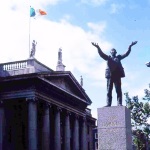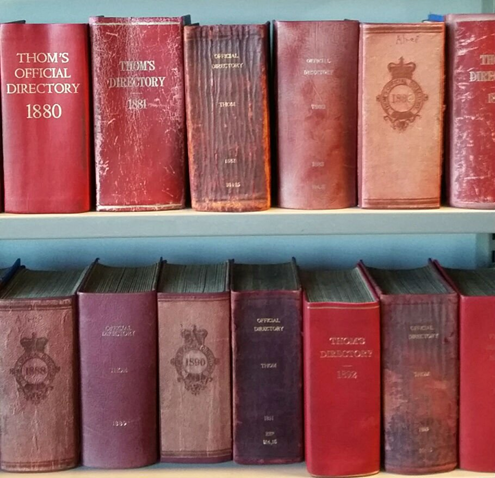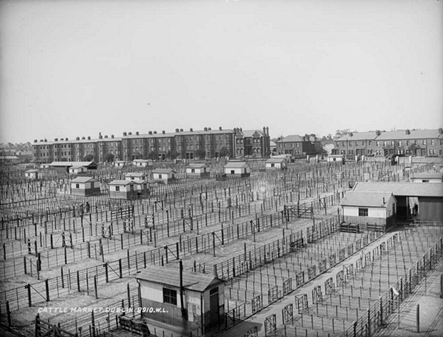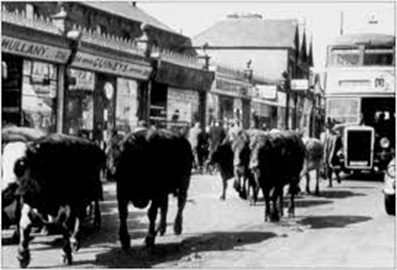Dublin Cattle Market – A workplace that has disappeared
Published on 18th April 2019
 Work and the availability of it is one of the features of human society that can be very contradictory in nature but has a huge impact, on the individual, on the community and on the shape of the physical environment in which they are situated. Dublin has expanded enormously since the beginning of the 20th century and many of the industries that were providing employment at that time have changed; either disappearing altogether or adapting to technological and other developments in the intervening century.
Work and the availability of it is one of the features of human society that can be very contradictory in nature but has a huge impact, on the individual, on the community and on the shape of the physical environment in which they are situated. Dublin has expanded enormously since the beginning of the 20th century and many of the industries that were providing employment at that time have changed; either disappearing altogether or adapting to technological and other developments in the intervening century.
Thom’s Directories are fascinating and invaluable sources and combined with the information to be gleaned from the Census records, we can learn quite a lot about workplaces that have now disappeared. The activities of one such workplace, the Dublin Cattle Market are well documented in Thom’s Directories, both for its core enterprises and ancillary businesses. [The Dublin City Library and Archives’ Reading Room provides free access to the Directories.]

Some of the Thom’s Directories on shelf in DCLA Reading Room (Festival of History, DCLA)
The cattle market in Smithfield was set up in the late seventeenth century and the sight of cattle being moved through the local streets was a common one. A new market in the Aughrim Street/Prussia Street area was officially opened in 1863 and became the major point of sale for cattle being driven from Meath and down through the northside streets of the city to boats moored at the North Wall.
During the early years of the 20th century this market was the busiest of its kind in Europe; throughput in one year numbered nearly three-quarters of a million animals. The market was held each Wednesday and attracted buyers not only from Dublin's abattoirs but also British livestock traders acting for slaughter houses and farmers in the north of England and Scotland.

Dublin Cattle Market c. 1900 (National Library of Ireland, NLI Ref: L_ROY_08909)
But cattle were the primary business and the market in Prussia Street was the final sales point for close to 90 per cent of stock exported each year. Houses were built to house the workers in the market and the ancillary businesses. Thom’s Directories show the number of small hotels and guesthouses that accumulated along the streets leading away from the cattle market to accommodate the dealers and buyers acting for sales masters coming from outside the city. It also shows that in the early decades of the century nearly every second building along Prussia Street had offices for cattle agents and others associated with the meat trade.
From the cattle market, the livestock were shifted by local drovers into lairages or yards around Prussia Street, before being finally moved into the market on the morning of the sale. After being sold, the livestock were driven along the streets to the nearby abattoirs or down the quays to the docks at North Wall to be exported to England or the continent.

Cattle driven through northside Dublin streets (Liam Clare, “The Dublin Cattle Market” in Dublin Historical Record Vol. 55, No. 2 (Autumn, 2002) https://www.jstor.org/)
The prominence of the Dublin Cattle Market began to fade in terms of the meat business in Ireland and by the 1970s it had ceased operations. The Drumalee estate was then built on the site and these days, the thriving growth industry in the area is student apartments and expensive coffee shops, as the DIT Campus at Grangegorman has become established.
Dublin Central Historian in Residence Dr. Mary Muldowney will give a talk on Disappearing Workplaces in the Central Library, ILAC Centre on Tuesday, 23rd April from 1-2 pm.